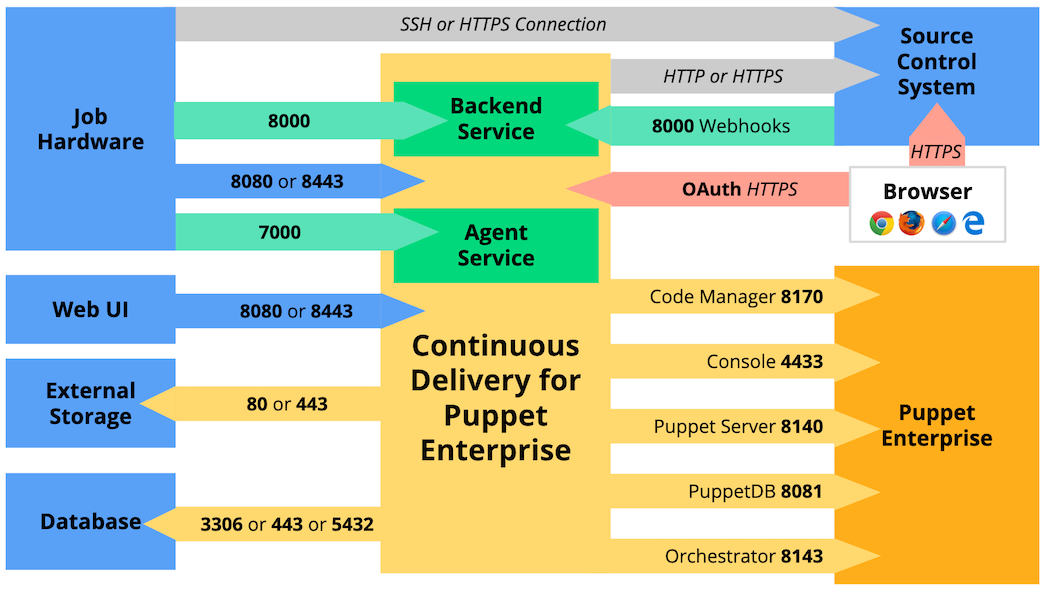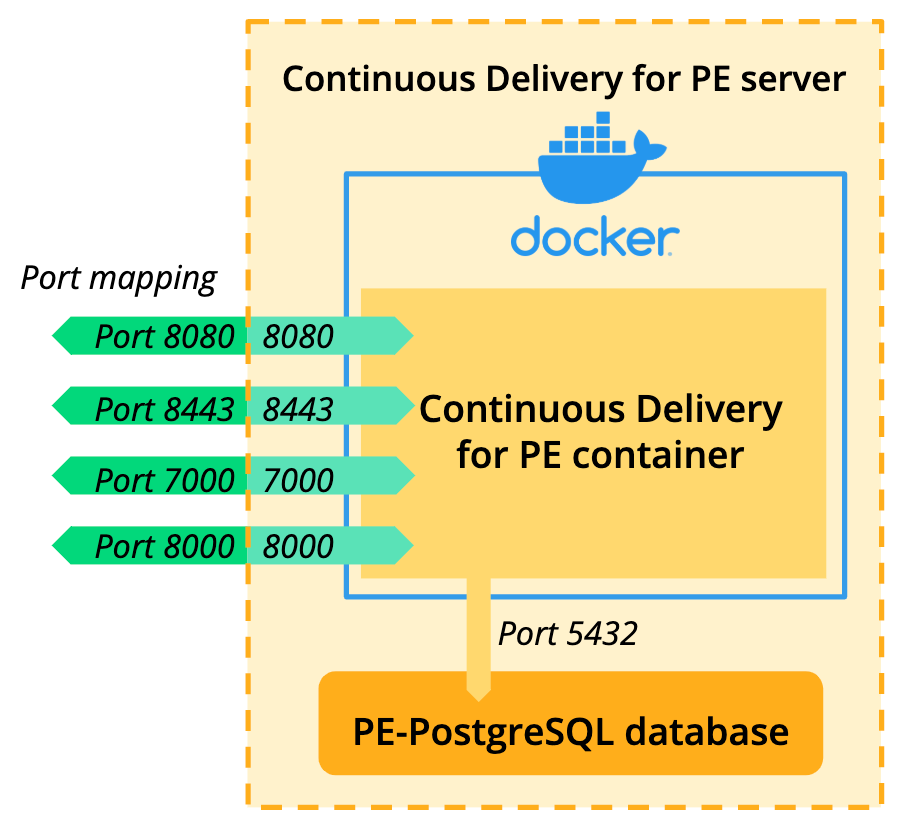Continuous Delivery for PE architecture
Continuous Delivery for Puppet Enterprise (PE) communicates with your PE installation, your source control system, and the servers you've designated as job hardware, as well as with the various components of the software.
The following diagram shows the architecture and port requirements of a Continuous Delivery for PE installation of version 3.4.0 or newer, using Puppet agent for job hardware. 

| Job hardware and web UI configuration | Default port number |
|---|---|
| HTTP | 8080 |
| HTTPS | 8443 |
| External storage configuration | Default port number |
|---|---|
| Artifactory using HTTP | 80 |
| Artifactory using HTTPS | 443 |
| Amazon S3 | 443 |
Continuous Delivery for PE uses a database to persist information. The puppetlabs-cd4pe module creates a new installation of PE-PostgreSQL on the node where you install Continuous Delivery for PE.
⛔ DEPRECATED: Support for external databases is deprecated, and will be removed in a future release.
| Database configuration | Default port number |
|---|---|
| PE-PostgreSQL (local) | 5432 |
| ⛔ MySQL (external) | 3306 |
| ⛔ Amazon DynamoDB (external) | 443 |
Continuous Delivery for PE Docker container configuration
Continuous Delivery for PE is run as a container in Docker. When you install the software, a PE-PostgreSQL database is created for you.

| Environment variable | Explanation |
|---|---|
ANALYTICS |
Optional. To opt out of analytics data collection, include
-e ANALYTICS=false. To learn
about what data we collect, see Analytics data collection. |
DUMP_URI
|
Required. How to address port 7000 of this container,
which is the endpoint used by the Continuous Delivery for PE
web UI to connect to the correct instance of the Continuous Delivery
agent service. In a typical installation, this value is dump://localhost:7000. |
DB_ENDPOINT |
Required if using an external database. The mysql:// or ddb:// endpoint used to connect to your database. For
example, mysql://samplehost:3306/cdpe. |
DB_USER and DB_PASS
|
Required if using an external database. Credentials for your database user. For MySQL: Login credentials for your MySQL user. For security purposes, the database user you select should be able to connect to only this database.
For Amazon
DynamoDB: Access and secret keys for your DynamoDB user.
For security purposes, select
a database user you select who can connect to only this database.
Important: Make sure you generate credentials
with full create, read, update, and delete permissions for
DynamoDB resources.
|
DB_PREFIX |
Optional. When starting up, Continuous Delivery for PE creates tables in MySQL or
DynamoDB. If you'd like the tables to share a prefix, such as
cdpe-, enter it here.
Tip: If you wish to simulate a fresh installation of a
given version of Continuous Delivery for PE, entering a
new database table prefix causes all the database tables to
regenerate.
|
PFI_SECRET_KEY |
Required. A 16-byte secret key used for AES encryption of
secrets (such as PE access tokens)
supplied to Continuous Delivery for PE. If you're a *nix user, generate this key by running: |
| Port number | Port use |
|---|---|
| 8080 | Web UI (non-SSL access) |
| 8443 | Web UI (SSL access) |
| 8000 | Backend services |
| 7000 | Continuous Delivery agent service |